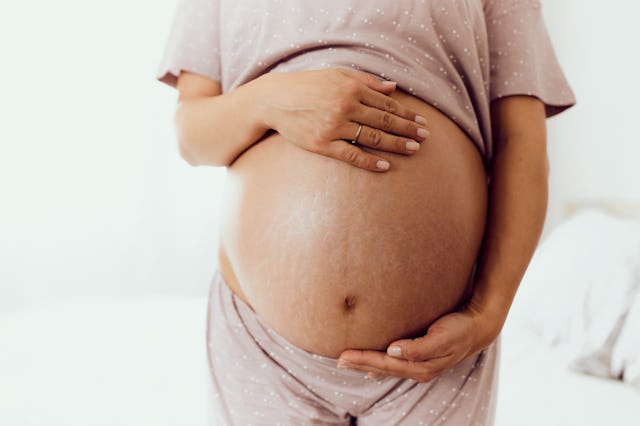Pregnancy-Related Deaths Are On The Rise As The Federal Government Cuts Funding For Maternal Health
The US has the highest rate of pregnancy-related deaths among high-income countries.

The United States has the highest rate of pregnancy-related deaths among high-income countries, and it is on the rise, with these “preventable deaths” jumping 28% over the past five years.
A new study published in JAMA Open Network analyzed pregnancy-related deaths across the country, and found a disturbing pattern of increased risk, along with disparities across states, races, and ethnicities.
The study is one of the first to track maternal health complications both during pregnancy and in the year after, leading to another concerning finding: one-third of pregnancy-related deaths occur more than six weeks after childbirth, when most mothers likely assume they are in the clear.
Researchers used data from the Centers for Disease Control and Prevention’s (CDC) division of reproductive health. Just last week, the Trump administration and Secretary of Health and Human Services Robert F. Kennedy Jr. eliminated the division, as part of the effort to "reduce bureaucratic sprawl” — despite the nation’s ranking as the most dangerous high-income country for pregnant people.
"It's a hard time for this to come out," Dr. Rose Molina, an OB-GYN at Harvard Medical School, who co-authored the study, told STAT. "We cannot take our eyes off of maternal health right now, and if anything, we need to not just maintain focus, but actually increase investment in maternal health to bring down some of what we're seeing — increases in pregnancy-related death rates, but also persistent inequities by racial and ethnic groups."
From 2018 to 2022, the CDC reported 6283 pregnancy-related deaths, including 1,891 late maternal deaths (occuring six weeks to a year after delivery). The study reported that the rate of pregnancy-related deaths in the US rose 27.7%, from 25.3 deaths per 100,000 live births in 2018, to 32.6 deaths per 100,000 live births in 2022.
The study found vast racial disparities for maternal mortality, with the most at-risk groups facing nearly five times the likelihood of death. American Indian and Alaska Native women had a markedly high mortality rate of 106.3 deaths per 100,000 live births, followed by Non-Hispanic Black women, at a rate of 76.9 deaths per 100,000 births. Non-Hispanic Asian women reported the lowest rates (21.8 deaths per 100,000 live births).
Pregnancy risk also varied by state. Alabama had the highest risk for maternal death, with 59.7 deaths per 100,000 live births. California reported the lowest rate, at 18.5 deaths per 100,000 live births. If the national rate matched California’s, 2,679 pregnancy-related deaths would have been avoided over the study’s five-year period.
Pregnancy-related deaths spiked during the COVID-19 pandemic, and declined somewhat afterwards, although they remained higher than pre-pandemic levels.
While deaths rose across all age groups, a disproportionate increase was seen among the 25-39 age group — potentially attributed to the rise in cardiovascular disease among the same group. Cardiovascular disease was the leading cause of the overall pregnancy-related deaths and late maternal deaths. Pregnancy can put a strain on the cardiovascular system, and exacerbate existing issues, such as hypertension.
“We seem as a society to be getting sicker earlier, which is why we’re seeing this in that particular age group,” Molina told the New York Times.
Cancer, mental and behavior disorders, and drug-induced and alcohol-induced death were reported as common contributing causes of late maternal death. The study did not include accidents, homicides and certain other deaths unrelated to pregnancy in the analysis.
The American College of Obstetricians and Gynecologists introduced updated guidelines in 2021 to optimize the postpartum care. The guidelines recommend that women see a maternal care provider within the first 3 weeks postpartum, followed by ongoing care as needed, and with a comprehensive postpartum visit no later than 12 weeks after birth.
“If you have any hypertensive disorders, I’m going to see you three to five days after delivery,” said Dr. Tamika Auguste, the chair of women’s and infants’ services at MedStar Washington Hospital Center and an author of the new guidelines told the New York Times. “No longer are we saying, ‘Let’s wait six weeks.’ Anyone else, even without hypertension, I want to see within two weeks.”
In recent years, most states have extended Medicaid coverage from 60 days to a full year after a delivery, in efforts to curb late maternal deaths. In fact, KFF found that nearly half of rural births depend on Medicaid. However, proposed federal cuts now jeopardize that coverage.
“We need to do better across all the states," Molina told Time. “We need to continue investing in the infrastructure (and) the policies that ensure access to high-quality pregnancy care for everyone.”